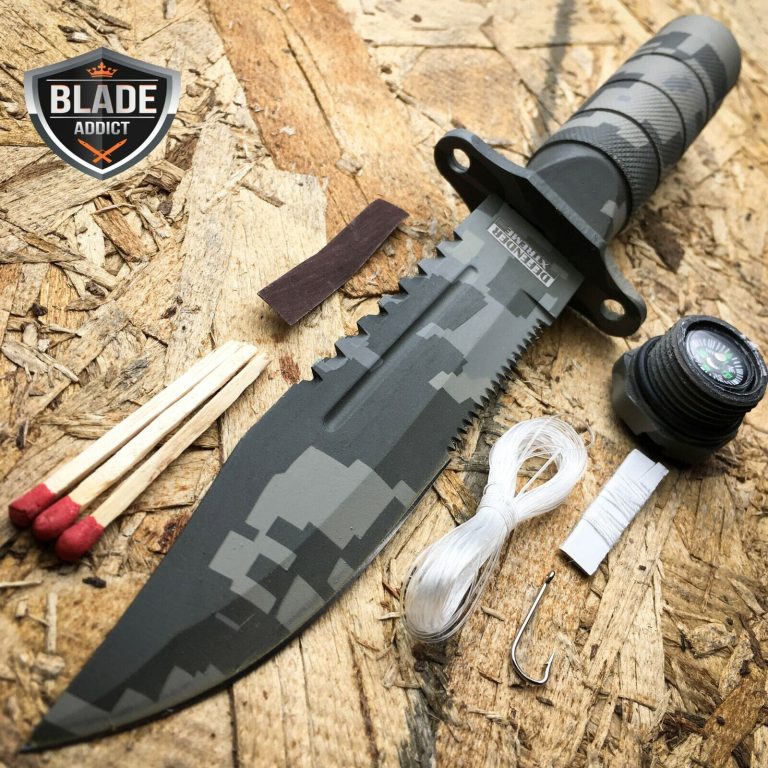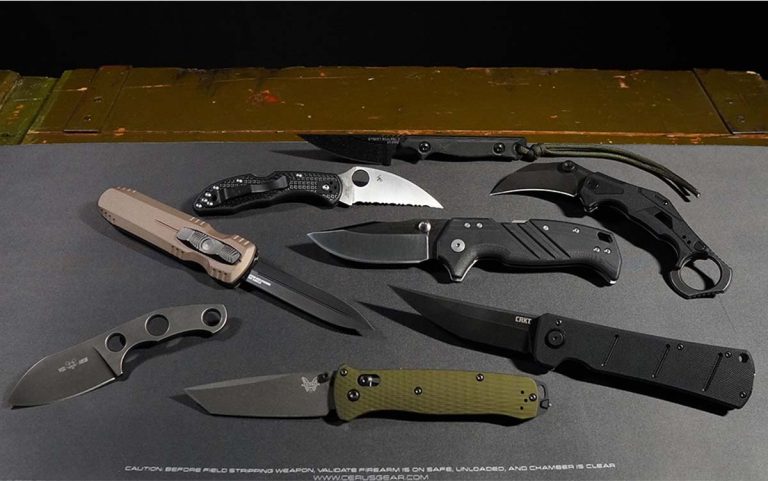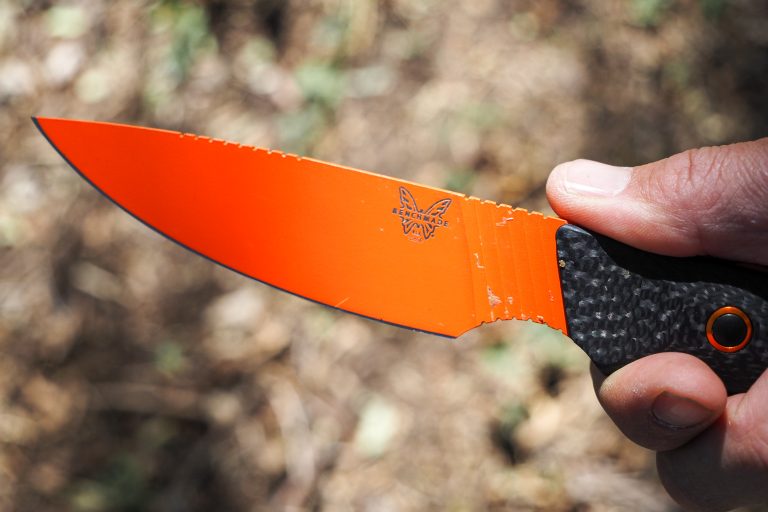The Future of Fishing Knife Technology
The future of fishing knife technology lies in advanced materials and ergonomic design, improving performance for anglers. Fishing knives will incorporate lightweight and corrosion-resistant materials, enhancing durability and reducing fatigue during long fishing trips.
Additionally, ergonomic handles will provide a comfortable grip, improving precision and control when cutting and filleting fish. These innovations will revolutionize the fishing knife industry, making fishing tasks easier, more efficient, and ultimately enhancing the overall fishing experience. As technology continues to advance, anglers can expect fishing knives to become more durable, user-friendly, and reliable, ensuring that they are well-equipped for their fishing adventures.
With these advancements on the horizon, the future of fishing knife technology is promising and exciting.
Advancements In Blade Materials
Exploration of new, durable blade materials for fishing knivesFishing knife technology has seen significant advancements in recent years, primarily in the area of blade materials. Manufacturers are constantly exploring new, more durable materials to improve the performance and longevity of fishing knives. These advancements have had a profound impact on the effectiveness of fishing knives in various fishing conditions and environments. Blades made from advanced materials, such as stainless steel alloys, carbon fiber composites, and ceramic coatings, offer superior strength and corrosion resistance. Not only do these materials contribute to the overall durability of the blade, but they also enhance cutting performance and precision. The use of advanced materials allows for sharper and more resilient knife edges, resulting in cleaner and more efficient cuts. Furthermore, the lightweight nature of these materials makes fishing knives more ergonomic and easier to handle for extended periods of use. Whether it’s filleting a fresh catch or scaling a fish, the advancements in blade materials ensure that anglers can rely on their knives to tackle any task with ease. With ongoing research and development, we can expect even more exciting advancements in fishing knife technology in the future, further enhancing the angling experience. |
Ergonomic Handle Designs For Improved Grip
The future of fishing knife technology is seeing exciting advancements with the introduction of innovative handle designs. These new ergonomic features focus on enhancing grip and comfort, revolutionizing the way anglers handle their fishing knives.
With **ergonomic handle designs**, fishing knives now offer a more secure and comfortable grip. These handles are strategically shaped to fit the contours of the hand, reducing strain and fatigue during extended use. The incorporation of **textured materials** further enhances the grip, ensuring the knife stays securely in the angler’s hand, even in wet conditions.
The introduction of **additional features** such as finger grooves and thumb rests improves control and precision. These enhancements allow for more accurate cutting and slicing, particularly when dealing with slippery or tough materials.
When selecting a fishing knife, it is important to consider the ergonomic handle designs and examine the various features available. An ergonomic handle can greatly improve both performance and safety, making fishing knife technology a key consideration for any angler.
Integration Of Technology In Fishing Knives
| The Future of Fishing Knife Technology |
| Integration of Technology in Fishing Knives |
| Incorporation of smart technologies in fishing knives |
Fishing knife technology is rapidly evolving, with the integration of smart technologies revolutionizing the industry. These advancements have paved the way for innovative designs that offer numerous benefits to fishermen. By incorporating technology into fishing knives, anglers can enjoy enhanced performance, precision, and convenience on their fishing expeditions. One of the key advantages of smart fishing knives is the integration of sensors, which enable real-time data collection. These sensors capture information such as water temperature, depth, and fish activity, providing valuable insights to fishermen to make informed decisions. Additionally, smart fishing knives may feature GPS capabilities, allowing users to track their location and mark fishing hotspots for future reference. Another potential application of technology in fishing knife design is the inclusion of Bluetooth connectivity. This enables seamless integration with smartphones or other devices, facilitating the transfer of data and enabling anglers to analyze their fishing data and share it with others. Furthermore, some smart fishing knives may even incorporate LED lights for improved visibility during night fishing trips. In conclusion, the integration of technology in fishing knives offers a promising future for fishermen. With features such as sensors, GPS, and Bluetooth connectivity, these smart knives provide valuable functions that enhance fishing experiences. As technology continues to evolve, we can expect further advancements in fishing knife design, ultimately improving the efficiency and success of anglers. |

Credit: gearjunkie.com
Lightweight And Portable Designs
The future of fishing knife technology is centered around lightweight and portable designs. Manufacturers have been focusing on developing fishing knives that are compact and easy to carry, without compromising on functionality. These knives are designed to be lightweight, making them effortless to handle and carry during outdoor fishing activities. One of the major considerations in this development process is finding the right balance between weight reduction and maintaining the necessary functionalities of a fishing knife.
The development of lightweight fishing knives has brought about a range of benefits for anglers. The reduced weight makes it easier to carry the knife while hiking to fishing spots or during long fishing trips. Additionally, the compact design allows for effortless storage, making it ideal for anglers who value portability and convenience.
To achieve a lightweight design, manufacturers have explored innovative materials and technologies. Advanced materials such as carbon fiber and titanium have been used to reduce the weight without compromising on durability. Additionally, ergonomic handle designs ensure a comfortable grip, enhancing the overall user experience.
In conclusion, the future of fishing knife technology lies in lightweight and portable designs. These advancements in design and materials provide anglers with a convenient and efficient tool for their fishing adventures.
Enhancements In Blade Maintenance And Sharpening
The future of fishing knife technology is rapidly evolving with enhancements in blade maintenance and sharpening. One notable advancement is the introduction of self-sharpening mechanisms in fishing knives. These mechanisms are designed to automatically sharpen the blade during use, ensuring a consistently sharp cutting edge. By incorporating self-sharpening mechanisms, fishing knives eliminate the need for frequent manual sharpening, saving time and effort for anglers.
In addition to self-sharpening mechanisms, manufacturers are also exploring improved blade maintenance techniques to prolong the lifespan of fishing knives. These techniques not only enhance the durability of the blade but also improve its overall performance. From advanced coatings that provide better corrosion resistance to innovative cleaning methods that prevent build-up of debris, these maintenance techniques ensure that fishing knives remain in prime condition for extended periods of use.
The combination of self-sharpening mechanisms and improved blade maintenance techniques is revolutionizing the fishing knife industry. Anglers can now enjoy the benefits of longer-lasting, sharp blades without the hassle of frequent sharpening and maintenance.
Sustainability In Manufacturing And Materials
Manufacturers in the fishing industry are increasingly recognizing the importance of sustainability in the production of fishing knives. Adoption of eco-friendly practices and materials is becoming more prevalent, driven by the desire to minimize negative environmental impacts. Sustainable fishing knife production involves utilizing renewable materials, reducing waste and emissions, and implementing efficient manufacturing processes.
Companies are now sourcing materials from sustainable suppliers, such as responsibly harvested wood and recycled metals. By prioritizing eco-friendly practices, manufacturers are reducing their carbon footprint and promoting a greener future. In addition, they are exploring innovative manufacturing techniques that minimize waste and maximize resource utilization. This includes recycling and repurposing materials, as well as optimizing production processes to minimize energy consumption.
Overall, the fishing industry is recognizing the need for sustainability in knife production. By adopting eco-friendly practices and materials, manufacturers are contributing to a more environmentally responsible and sustainable future for the industry.
Safety Features For Injury Prevention
Safety Features for Injury Prevention As fishing knife technology continues to evolve, one crucial aspect that manufacturers focus on is integrating safety measures to minimize accidents. Examining features such as blade lock mechanisms and finger guards highlights the commitment towards safety in fishing knife designs. Blade lock mechanisms ensure that the blade remains securely locked during use, reducing the risk of it accidentally closing and causing injury. Finger guards, on the other hand, act as a protective barrier between the user’s fingers and the sharp edge of the blade, preventing accidental cuts. These safety features are vital in providing a secure and reliable tool for anglers and contribute to a safer fishing experience. Incorporating such measures in fishing knife designs demonstrates the industry’s dedication to continuously improve safety for fishermen, encouraging responsible and injury-free fishing practices. |
Conclusion
With the rapid advancement in technology, the future of fishing knife technology looks promising. As manufacturers continue to innovate, fishermen can expect knives that are more durable, versatile, and efficient. These knives will incorporate features like corrosion-resistant materials, ergonomic designs, and enhanced cutting capabilities.
Additionally, the integration of smart technology may offer features such as GPS tracking, weather updates, and more. As a result, fishermen will be able to enjoy a safer and more convenient fishing experience. Moreover, the increased focus on sustainability and eco-friendly practices will drive the development of knives made from recycled and biodegradable materials.
This will help to reduce the ecological impact of fishing activities. The future of fishing knife technology is not only focused on functionality but also on providing a more enjoyable and environmentally conscious fishing experience for all. So, be ready to witness the exciting advancements that lie ahead in the world of fishing knife technology.






